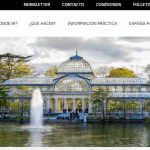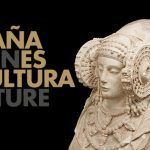SEGITTUR has updated its Semantics Manual for Tourist Destinations, which aims to achieve standardised communication between Smart Destinations to increase tourist confidence in the face of COVID-19 throughout the life cycle of their trip.
This project has been carried out by SEGITTUR within the framework of a work group consisting of Sanxenxo, Santa Susanna and Conil: three Smart Destinations Network destinations.
The work group has identified the relevant information relating to COVID-19 that a tourist destination needs to convey to its visitors throughout the cycle of their trip, as well as to its own residents. It has organised this information based on the Semantics Manual for Smart Destinations: vocabulary for digital systems established in 2019 and laid out in standard UNE 178503.
The Manual has incorporated new vocabulary categories to improve tourists’ confidence and safety. For example, tourists can check the advice a destination wishes to communicate in advance so they can plan their trip accordingly, find out about the mandatory health and safety rules during their stay for each of the places they visit and have the security of knowing about all the health infrastructure and emergency services available to them.
To ensure the proposed vocabulary and management model are applicable, they have been initially implemented using the promotion platform in Sanxenxo, Santa Susanna and Conil, and everything has functioned correctly.
The three destinations can now manage their information on the promotion platform and make it visible to their visitors by using digital connectors, such as dynamic QR codes or their network of intelligent tourist signs installed in their municipalities. This information can also be shared to any other channel (web pages, social networks, search engines) in a standardised manner, compatible with any digital technology.
In addition to the expansion of vocabulary related to COVID-19, the Manual includes six best practices with examples of applied contextualised vocabulary for specific situations. One such example is the “Communicating all measures to guarantee safe holidays” section, which explains how to inform tourists and residents of said measures by using the vocabulary established by the project.
Given the need to act on information management quickly during a pandemic, this guide is being presented prior to the publication of a new version of standard UNE 178503, which is already in the process of being updated.
Once the updated standard is published, the inclusion of the new terms it features in the global tourism vocabulary work group schema.org will be requested.
The Semantics Manual is available on the SEGITTUR website.





